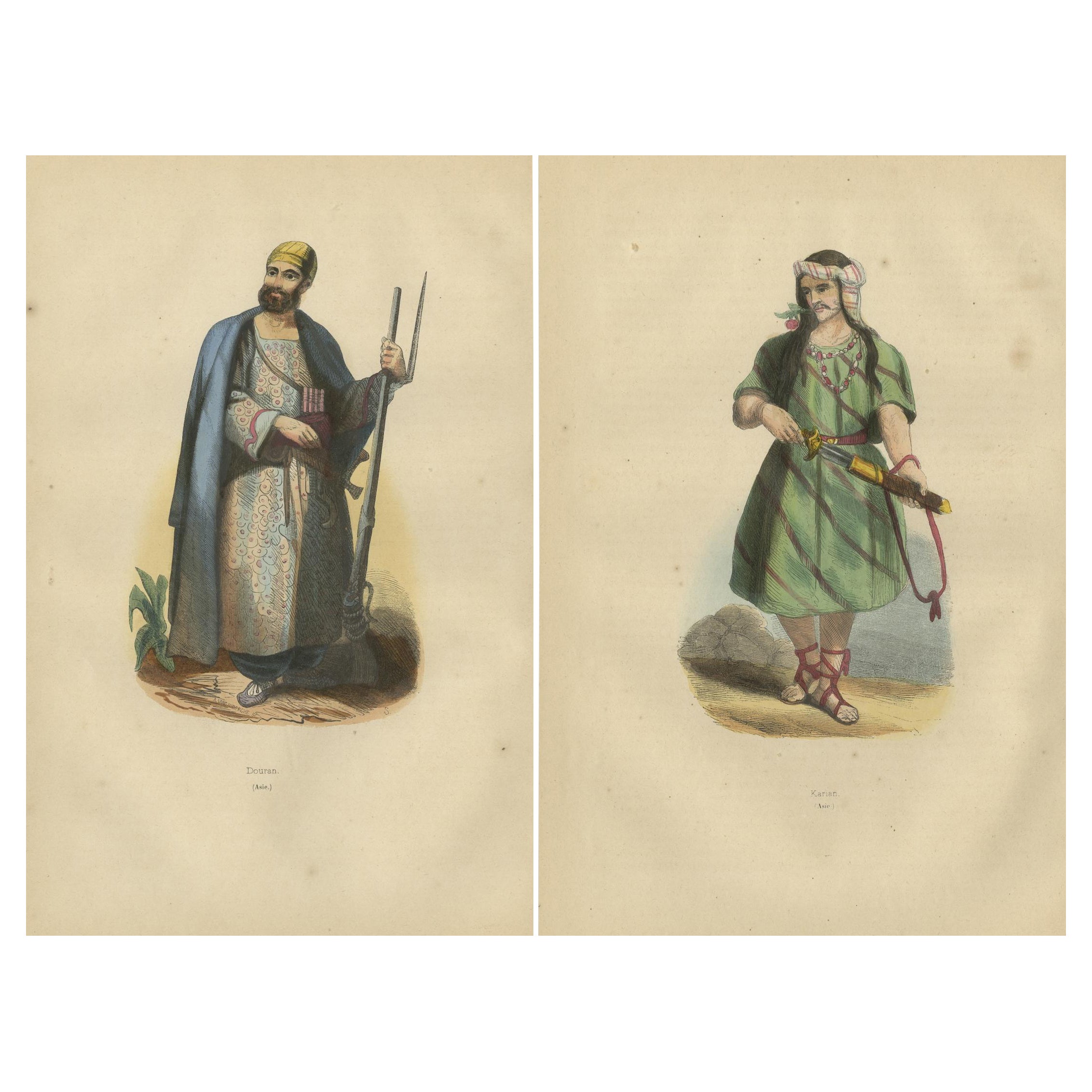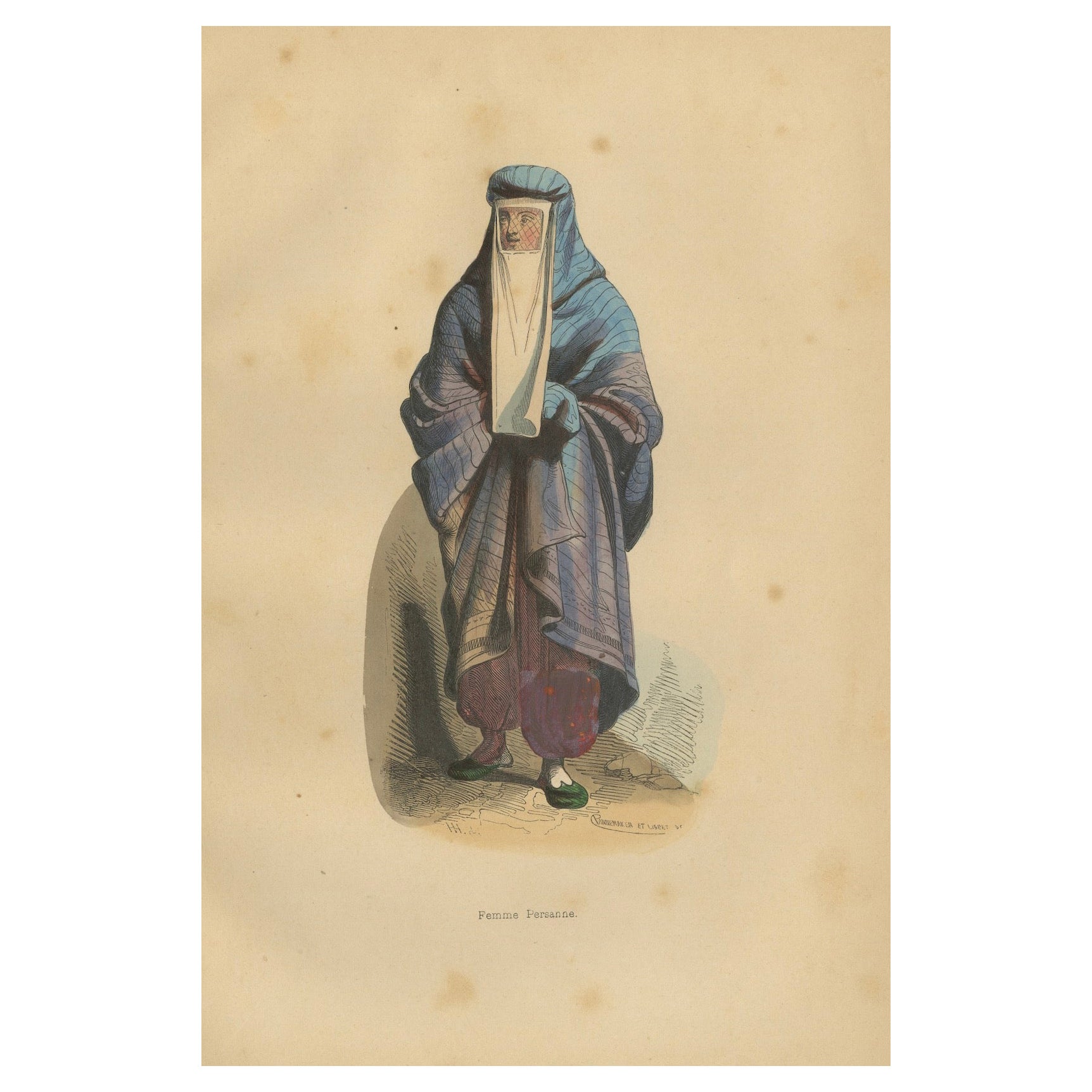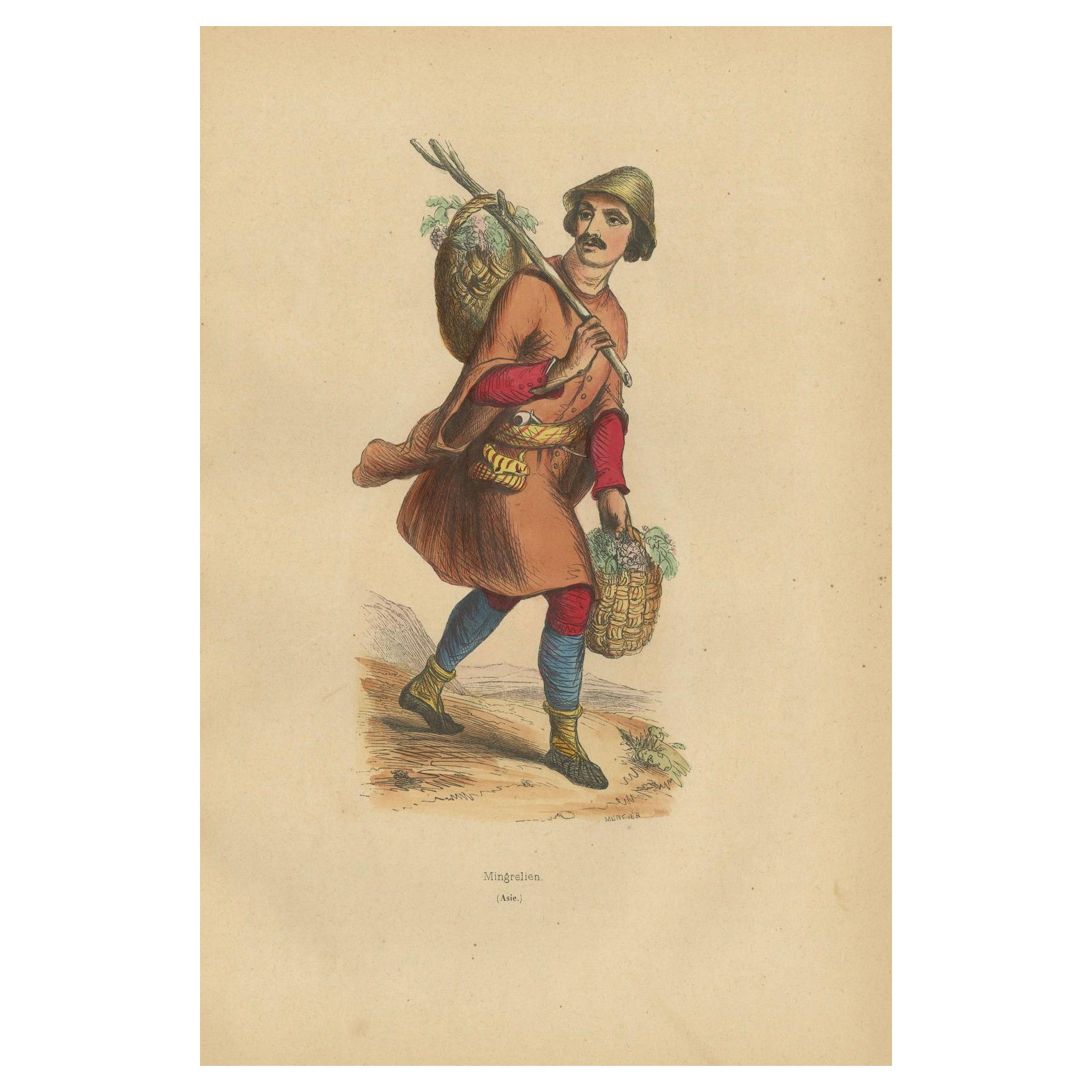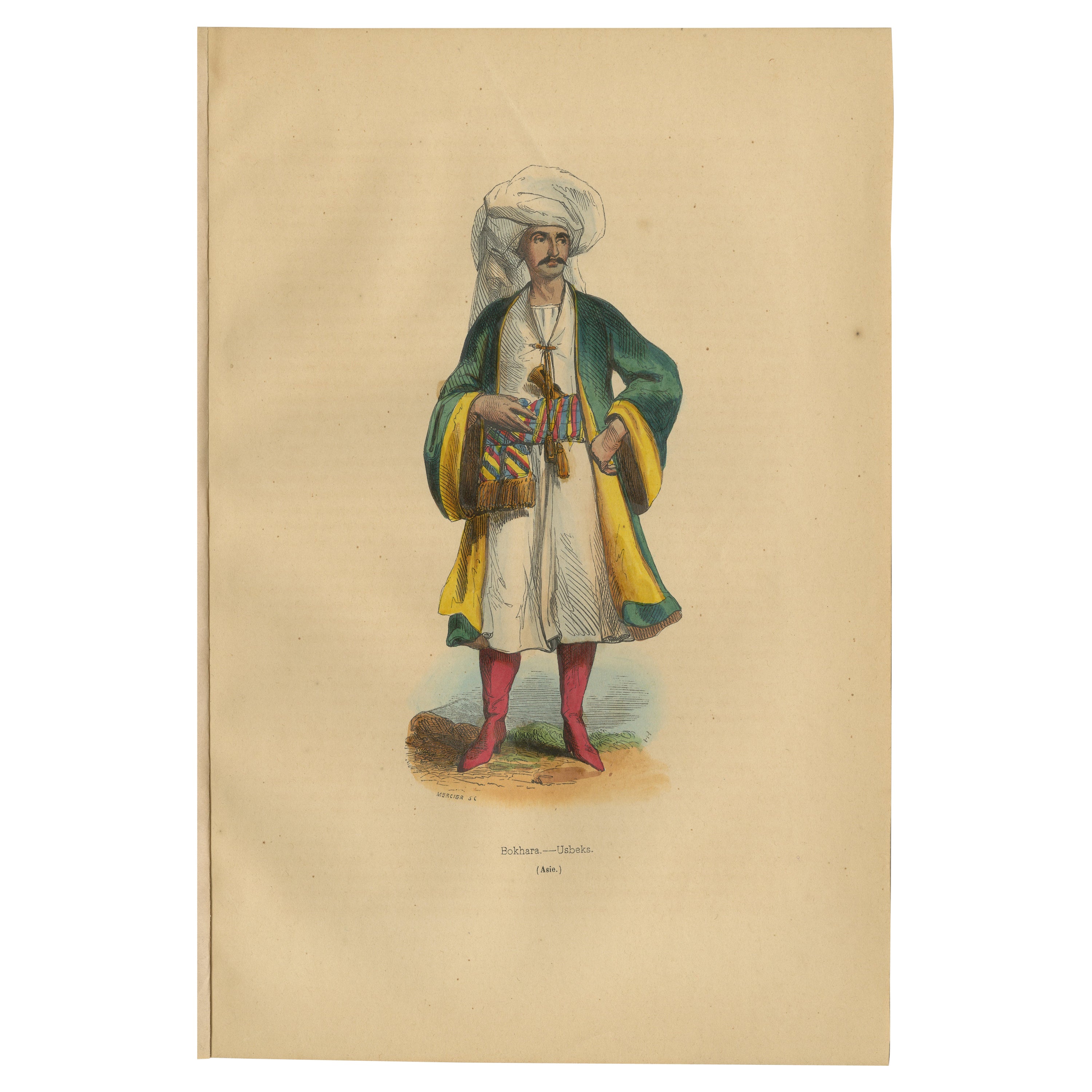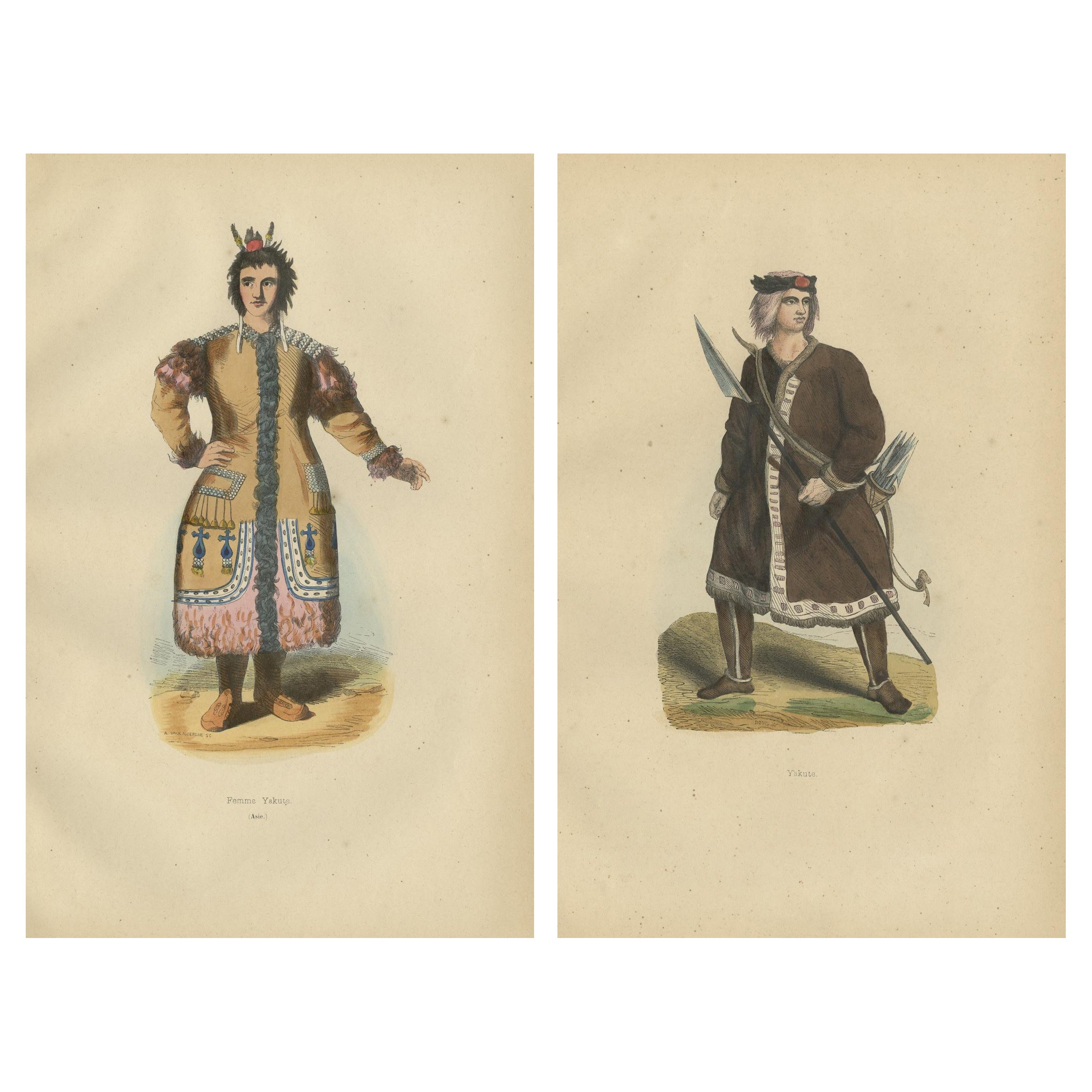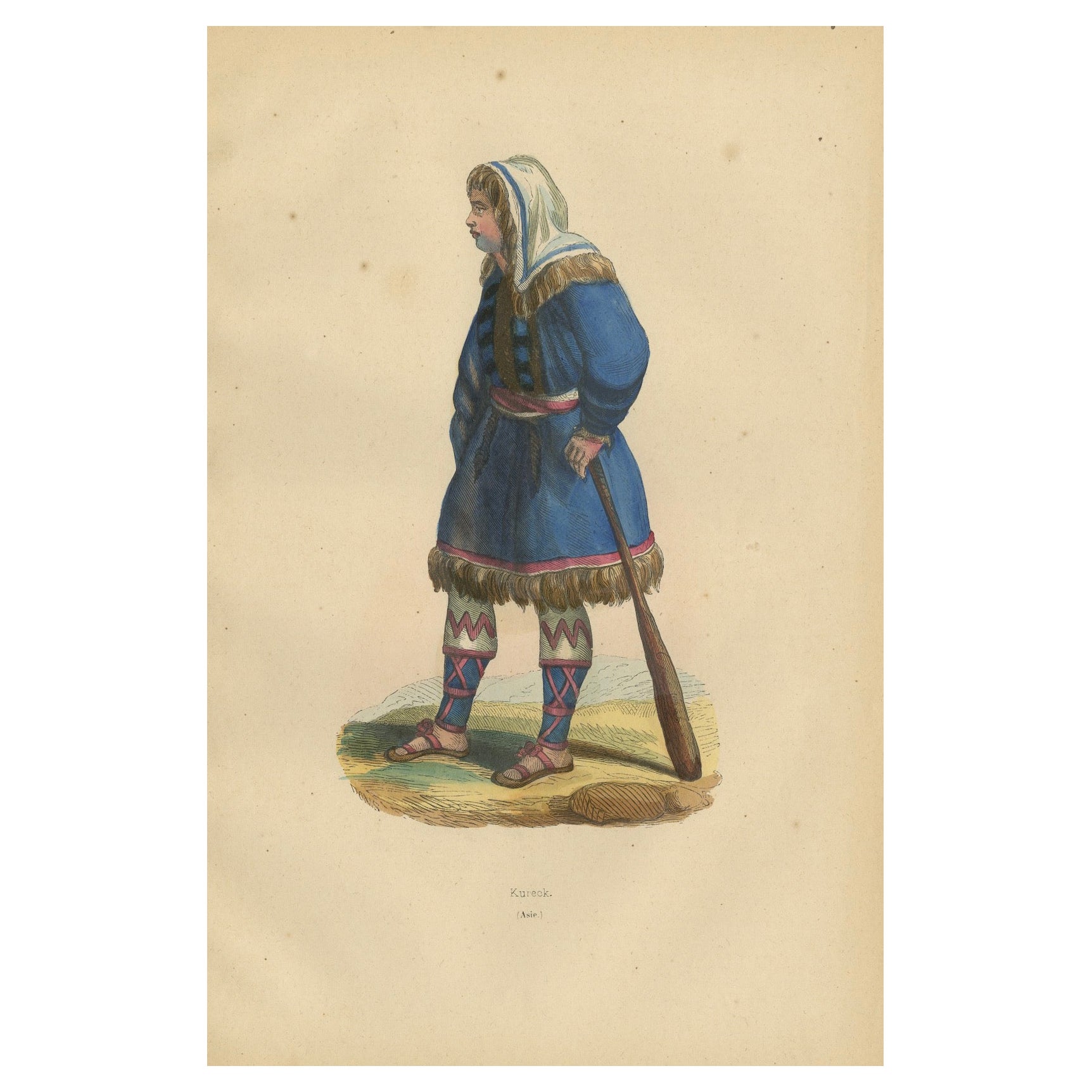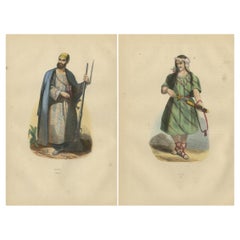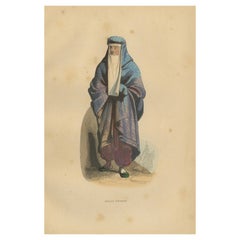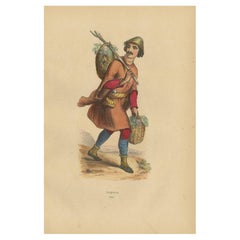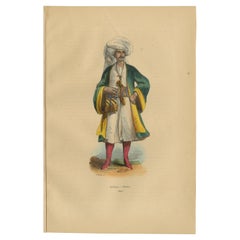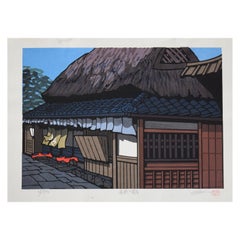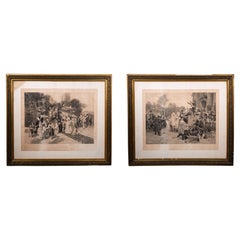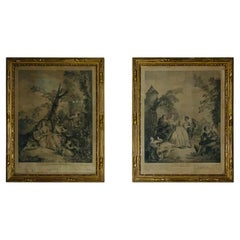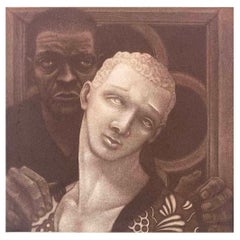Items Similar to 1844 Persian Cultural Figures: Engraved Prints of Traditional Attires
Want more images or videos?
Request additional images or videos from the seller
1 of 6
1844 Persian Cultural Figures: Engraved Prints of Traditional Attires
About the Item
Title: "1844 Persian Cultural Figures: Engraved Prints of Traditional Attires"
Description: This compilation features three handcoloured lithographs representing traditional Persian figures: a common man, a dervish, and a noble, from the esteemed 1844 collection "Moeurs, Usages et Costumes de tous les Peuples de Monde" by Auguste Wahlen.
Published in Paris, these prints are crafted through lithography, a popular 19th-century technique, and are enhanced with Arabic gum on wove (vellin) paper. The vivid depiction of their cultural attire and the distinct portrayal of each social stratum make these prints particularly captivating. They offer a glimpse into the historical socio-cultural fabric of Persia, making them highly sought after by collectors and enthusiasts of Middle Eastern art and history.
In the three prints you provided of Persian figures, each character holds something distinct that signifies their role or status within their culture:
1. Persé - Homme du Peuple (Common Man):
- Holding: This figure holds a walking stick or cane, which is a common accessory that could be used for practical purposes like walking support or herding animals.
- Outfit: He wears traditional attire with a long coat and a large hat, indicative of a common man's clothing in historical Persian society. His outfit and the stick both emphasize his everyday, practical life.
2. Derviche Persan (Dervish):
- Holding: The Dervish holds a stick and a begging bowl. Dervishes are known for their ascetic piety, often connected with Sufism in Islam. The stick (or staff) symbolizes their travels and spiritual journey, while the bowl is used to receive alms, reflecting their vow of poverty.
- Interesting Fact: Dervishes are part of a mystical spiritual ascetic practice within Islam, focusing on the universal values of love and service. Their clothing and accessories reflect simplicity and spiritual richness.
3. Noble Persan (Nobleman):
- Holding: The nobleman carries a sword, which is a symbol of power, authority, and martial prowess. It is commonly featured in depictions of nobility as a sign of their status and ability to command.
- Outfit: His clothing is significantly more elaborate and colorful compared to the others, with fur trim and decorative patterns, signifying wealth and high social status.
These accessories and their attire provide a deep insight into the roles and societal positions of each figure within Persian culture, reflecting a wide range of personal and social identities from the common man to spiritual seekers and the ruling elite. Each element, from the practical walking stick to the symbolically rich begging bowl and the authoritative sword, offers a narrative about their life, status, and societal roles during that historical period.
Keywords:
- Antique Persian prints
- Handcoloured lithographs
- 19th-century Persian culture
- Auguste Wahlen lithography
- Traditional Persian costumes
- Collectible cultural prints
- Historical Persian figures
- Middle Eastern historical art
- Ethnographic lithographs
- Vintage Persian attire prints
These keywords help target collectors and cultural historians who are particularly interested in Middle Eastern historical prints and Persian cultural heritage.
- Dimensions:Height: 10.12 in (25.7 cm)Width: 6.7 in (17 cm)Depth: 0 in (0.02 mm)
- Sold As:Set of 3
- Materials and Techniques:
- Period:
- Date of Manufacture:1844
- Condition:Condition: Good, given age. Faintly browned, and with some small stains. Some glue remains (from binding) in the far left margin (not affecting image). General age-related toning and/or occasional minor defects from handling. Please study the scans.
- Seller Location:Langweer, NL
- Reference Number:Seller: BG-12722-34, BG-12722-35, BG-12722-381stDibs: LU3054341383902
About the Seller
5.0
Recognized Seller
These prestigious sellers are industry leaders and represent the highest echelon for item quality and design.
Platinum Seller
Premium sellers with a 4.7+ rating and 24-hour response times
Established in 2009
1stDibs seller since 2017
2,417 sales on 1stDibs
Typical response time: <1 hour
- ShippingRetrieving quote...Shipping from: Langweer, Netherlands
- Return Policy
Authenticity Guarantee
In the unlikely event there’s an issue with an item’s authenticity, contact us within 1 year for a full refund. DetailsMoney-Back Guarantee
If your item is not as described, is damaged in transit, or does not arrive, contact us within 7 days for a full refund. Details24-Hour Cancellation
You have a 24-hour grace period in which to reconsider your purchase, with no questions asked.Vetted Professional Sellers
Our world-class sellers must adhere to strict standards for service and quality, maintaining the integrity of our listings.Price-Match Guarantee
If you find that a seller listed the same item for a lower price elsewhere, we’ll match it.Trusted Global Delivery
Our best-in-class carrier network provides specialized shipping options worldwide, including custom delivery.More From This Seller
View AllCultural Warriors: Traditional Attire of Iranian and Afghan Tribes, 1844
Located in Langweer, NL
Handcoloured lithographs, heightened with Arabic gum on wove (vellin) paper.
From the Asia volume of “Moeurs, Usages et Costumes de tous les Peuples de Monde” by Auguste Wahlen. Thi...
Category
Antique 1840s Prints
Materials
Paper
Elegant 1844 Lithograph of a Persian Woman in Traditional Attire
Located in Langweer, NL
This handcoloured lithograph titled "Femme Persane" vividly captures the traditional attire of a Persian woman, showcasing the rich cultural heritage and detailed craftsmanship of 19th-century Persia.
The print is part of Auguste Wahlen's "Moeurs, Usages et Costumes de tous les Peuples de Monde," published in 1844 in Paris.
The image stands out for its intricate detailing, especially the veil and robe, which are adorned with elaborate patterns and vibrant colors typical of Persian fashion.
The woman's attire includes a veil that covers the face partially, known as a "ruband," which was commonly worn in public by women in some regions of Persia as a sign of modesty and status. Her robe, layered and colorful, reflects the sophisticated textile techniques of the time, including embroidery and fabric dyeing, which were highly regarded skills in Persian society.
The attractiveness of such prints lies in their ability to convey the elegance and intricacy of Persian women's fashion, providing a window into the everyday life and social customs of the time.
The use of handcoloured lithography, a popular printing technique of the era, allows for vivid coloration and detailed representation, making these prints highly desirable for collectors and enthusiasts of historical fashion and cultural heritage.
Keywords:
- Antique Persian prints...
Category
Antique 1840s Prints
Materials
Paper
1844 Lithograph of a Mingrelian Man in Traditional Georgian Attire
Located in Langweer, NL
The lithograph titled "Mingrelien" depicts a man from Mingrelia (historically part of Western Georgia), showcasing traditional attire and daily activities typical for the region. Here are some insights:
This 1844 handcoloured lithograph captures a Mingrelian man engaged in daily activities, part of Auguste Wahlen’s "Moeurs, Usages et Costumes de tous les Peuples de Monde."
Published in Paris, the print vividly illustrates the traditional dress and lifestyle of Mingrelia, a region known for its rich cultural heritage within Georgia. The man is depicted carrying a basket of grapes, suggesting involvement in viticulture, which is a significant aspect of Georgian agricultural practices. His outfit is practical yet colorful, with a combination of a red tunic...
Category
Antique 1840s Prints
Materials
Paper
1844 Lithograph of a Bukharan Uzbek: Traditional Attire and Craft
Located in Langweer, NL
"1844 Lithograph of a Bukharan Uzbek: Traditional Attire and Craft"
Description: This 1844 lithograph captures a traditional Bukharan Uzbek man, from the renowned series "Moeurs, Usages et Costumes de tous les Peuples de Monde" by Auguste Wahlen.
Published in Paris using the technique of handcoloured lithography, enhanced with Arabic gum on vellin paper, this print vividly portrays the rich cultural attire unique to Bukhara, Uzbekistan.
The man's elaborate robe and distinctive headwear highlight the regional fashion and craftsmanship. The print’s appeal lies in its detailed depiction of historical dress and accessories, offering a window into the cultural diversity of Central Asia. Such prints are treasured for their historical value and intricate artistry, making them highly desirable to collectors and enthusiasts of ethnographic art.
The lithograph depicting a man from Bukhara, Uzbekistan, offers several intriguing cultural and historical insights:
1. Traditional Attire: The attire of the Bukharan man, particularly the elaborate robe and turban, is a rich display of Uzbek textile craftsmanship. Traditional robes, often made from silk and cotton, are adorned with intricate ikat patterns—a dyeing technique where threads are dyed before weaving. This style is emblematic of Uzbekistan's well-known textile industry.
2. Turban Significance: The turban, known locally as a "doppa" or "tubeteika," is more than just practical headwear; it serves as a cultural symbol of status and identity. The style, color, and way it is worn can convey information about the wearer's social status, region, and even his clan affiliations.
3. Historical Context: Bukhara was a pivotal Silk Road city, making it a melting pot of cultures, languages, and religions. The diverse influences are reflected in the traditional clothing, which blends Persian, Turkic, and nomadic styles.
4. Artistic Technique: The use of handcoloured lithography in the 19th century allowed for high-quality, detailed prints that were more accessible to the European public. This technique involved drawing on limestone with a greasy medium, then using water and oil-based ink to print vibrant images, which were then painted by hand.
5. Cultural Preservation: Prints like this serve not only as artwork but also as historical documents that preserve and share the cultural heritage of regions less known to the Western world at the time. They played a crucial role in educating and influencing perceptions about distant cultures during the 19th century.
This print, therefore, is not just a beautiful piece of art but a deep well of cultural history and craftsmanship, reflecting the rich tapestry of life in Central Asia during the 19th century.
Keywords:
- Antique Uzbek prints
- Handcoloured lithography
- 19th-century Central Asian costumes
- Auguste Wahlen lithographs
- Traditional Bukharan attire
- Ethnographic art prints
- Collectible cultural lithographs
- Historical Uzbek fashion
- Asian historical prints
- Vintage Uzbek art...
Category
Antique 1840s Prints
Materials
Paper
Yakut People in Traditional Attire, 1844 Handcolored Lithographs
Located in Langweer, NL
Yakut People in Traditional Attire, 1844 Handcolored Lithographs
These 1844 handcolored lithographs feature individuals from the Yakut community, part of Auguste Wahlen's extensive ...
Category
Antique 1840s Prints
Materials
Paper
Traditional Kurek Attire in Handcolored Lithograph from 1844
Located in Langweer, NL
The print portrays a Kurek, likely a member of a Siberian ethnic group. This print, part of Auguste Wahlen's "Moeurs, Usages et Costumes de tous les Peuples de Monde" from 1844, high...
Category
Antique 1840s Prints
Materials
Paper
You May Also Like
Traditional Japanese Woodblock Print of a Traditional Kyoto Town House
Located in Weesp, NL
Japanese limited edition woodblock print by Katsuyuki Nishijima in great condition.
"Machiya in Marutamachi" Traditional Japanese wooden townhous...
Category
Vintage 1970s Japanese Mid-Century Modern Prints
Materials
Paper
Pair of framed prints, Wedding and Baptism. ALPHONSE LAMOTTE (1844-1914).
Located in Madrid, ES
Pair of framed prints, Wedding and Baptism. ALPHONSE LAMOTTE (1844-1914).
Pair of framed engravings that represent, respectively, a wedding o...
Category
Antique 19th Century French Neoclassical Revival Prints
Materials
Other
Set of Two Framed French Engraved Art Prints
Located in Guaynabo, PR
This is a set two framed French engraved art prints. The first one is titled “La Conversation Interessante”. It depicts an 18th century group of lover’...
Category
Early 20th Century French Rococo Prints
Materials
Paper
$455 Sale Price / set
30% Off
"Promise of Paradise", Print with African American Male Figures
Located in Philadelphia, PA
Printed in a lovely shade of ruddy brown, this mysterious print depicts a young Black male figure in the foreground, with an older African American man behind him and holding him by ...
Category
Vintage 1980s American Modern Prints
Materials
Paper
Set of 6 19C Irish Engraved Prints of Scenes of Dublin by James Malton
Located in Dallas, TX
PRESENTING A FABULOUS AND RARE Set of 6 19C Irish Engraved Prints of Scenes of Dublin by James Malton.
Set of 6 VERY RARE AND VALUABLE engraved prints of Dublin, Ireland scenes.
These were printed by ‘Cahill Printers Ltd.’ circa 1880-1900.
‘Cahill Printers Ltd’ have been in existence since 1866 and acquired the rights to print these copies of the original watercolors by James Malton (1761 – 1803).
Set of 6 19C Irish Engraved Prints of Scenes of Dublin by James Malton
These scenes are: (in order):
Rotunda & New Rooms,
Great Court Yard Dublin Castle...
Category
Antique Late 19th Century Irish George II Prints
Materials
Wood, Paper
Mirror Frame With Engraved Dutch Print Depicting Dukes Of Mirandola Coat Of Arms
Located in Prato, Tuscany
We kindly suggest that you read the entire description, as with it we try to give you detailed technical and historical information to guarantee the authenticity of our objects.
The ...
Category
Antique Mid-17th Century Dutch Modern Prints
Materials
Wood, Paper
